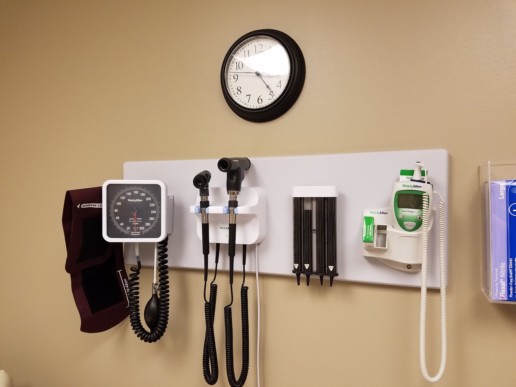Point-of-sale wellness: How health plans are cashing in
Many health plans are starting to offer preventative approaches to help promote health and reduce skyrocketing healthcare costs. In this article, Vielehr talks about one approach, the point-of-sale wellness method.
Health care costs continue to skyrocket, and payers are constantly looking for ways to keep their populations healthier and to reduce these costs. Payers looking for more effective strategies to improve health and wellness for members should be aware of the new preventative approaches that more health plans are offering.
One such method that health plans are deploying to engage members is point-of-sale wellness, a type of incentive program that encourages members to actively make healthier purchases and lifestyle choices. As point-of-sale wellness becomes more prevalent among health plans, human resource managers and benefits brokers should understand how these programs work to best determine if they would be a valuable option for their employees and clients.
What is point-of-sale wellness?
Point-of-sale wellness is all about helping health plan members make smart, healthy purchasing decisions when they’re in a retail store or pharmacy. According to the Henry J. Kaiser Family Foundation, the average consumer visits their doctor 3.1 times per year. This same consumer will visit his or her favorite retailers multiple times per week. This presents the perfect opportunity for actionable engagement. It is often too easy for individuals to make impulsive decisions that favor cheaper care items or junk food that provides instant gratification but lead to an unhealthy lifestyle in the long run. Empowering consumers in these moments before checking out at the register with the understanding — and more importantly, the financial incentive — to make informed, smarter choices can lead to a healthier lifestyle and reduced health care costs. In short, the goal is to help individuals prioritize health and wellness at retail point of sale.
There are numerous ways that health plans can achieve this goal. One of the most common is by providing members with prepaid cards that are loaded with funds and discounts for the purchase of over-the-counter (OTC) items such as vitamins, diabetes care items and medications for allergies or cold and flu symptoms. The key component of these specialized prepaid cards is that they can be restricted-spend cards. In other words, they cannot be used to purchase any items that the health plan members want; they can only be used to purchase items off a curated list of products.
Under this arrangement, all parties, from the individual to the health plans and retailers, benefit. With a restricted-spend prepaid card in hand, an individual is rewarded for making purchases that contribute to a healthier lifestyle, while reducing health care costs both for themselves and the health plans administering the cards. In the meantime, the retailers partnering with the health plans to make point-of-sale wellness possible enjoy the opportunity to build long-term customer relationships with the health plan members using the cards.
Point-of-sale wellness in action
Point-of-sale wellness can be customized to be as general or specific as a health plan needs. For example, a health plan that supports a high number of new parents on a regular basis may offer a prepaid card designed specifically to assist members with newborn children. The first years of an infant’s life are among the most expensive from a health care perspective. More health plans are starting to offer new parents prepaid cards that are loaded with funds and discounts for items such as OTC medications, baby food and formula, diapers, strollers, car seats or thermometers. This opens an easier path for new parents to do basic at-home diagnostics and keep their babies’ health monitored so costly trips to an emergency room or urgent care center are not needed as often.
Payers that offer health and wellness programs to assist new parents in their populations can consider engaging health plans that offer these types of prepaid cards. Having a healthier child has the added benefit of reducing stress on the parents, which means they are in a better position to continue performing in the workplace.
Financial incentives for healthier choices
Most wellness programs are focused on informing participants of the best ways to support a healthier lifestyle, but that is only half of the equation. Point-of-sale wellness goes one step further to ensure participants are empowered from a financial perspective to make smarter purchasing decisions while shopping for daily care items. Businesses and benefits brokers who want to provide their employees and clients the best opportunities to live a healthier lifestyle should consider engaging health plans that prioritize these prepaid card incentives into their offerings.
Vielehr, D. (19 July 2018). "Point-of-sale wellness: How health plans are cashing in" (Web Blog Post). Retrieved from https://www.benefitspro.com/2018/07/19/point-of-sale-wellness-how-health-plans-are-cashin/
3 questions to ask about paid leave programs
Paid time off policies are offered by employers for numerous reasons, employee wellness being one of them. Continue reading to learn about the 3 key questions to ask about these programs and their costs.
Employers provide paid time away from work policies for a variety of reasons: to attract and retain talent (responding to employee needs and changing demographics); to be compliant with local, state and federal laws (which are proliferating); and to support general employee well-being (recognizing that time away from work improves productivity and engagement).
While offering paid absence policies delivers value to both employees and the employers, employers recognize the need to balance the amount of available time with the organization’s ability to deliver its products and services.
To help employers balance paid time away drivers, here are three key questions to ask to get a handle on the costs and benefits of paid leave.
1. Do you have a complete picture of the costs associated with your employees’ time away from work?
A challenge for many employers is getting a handle on the cost of time away from work and the related benefits. If an employer cannot quantify the costs of absence, it may not be able to define management strategies or to engage leadership to adopt new initiatives, policies or practices related to paid and unpaid time away programs.
Ninety percent of employers participating in the 2017 Aon Absence Pulse Survey reported they hadn’t yet quantified the cost of absence, and 43 percent of participants identified defining the cost of absence as a top challenge and priority. Though intuitively managers and executives recognize there is an impact when employees are absent from work, particularly when an absence is unscheduled, they struggle to develop concrete and focused strategies to address absence utilization without the ability to measure the current cost and collectively the impact of new management initiatives.
Employers struggle to quantify the cost of absence in the context of productivity loss, including replacement worker costs. According to the Bureau of Labor Statistics in 2017, employers’ cost of productivity loss associated with absenteeism was $225.8 billion, and 9.6 percent of compensation was spent on lost time benefits and overtime.
Employers are expanding their view of absence, recognizing that use of paid and unpaid time away programs are often associated with an employee’s health. As a result, combining data across health and absence programs allows an employer to recognize drivers of absence “work-related value” and define strategies to address not just how to manage the absence benefit, but to target engagement to improve well-being and the organization’s bottom-line.
As an example, musculoskeletal conditions are frequently associated with absence, which is not surprising when 11 percent of the workforce has back pain. It is noteworthy that of those with back pain, 34 percent are obese, 26 percent are hypertensive and 14 percent have mood disorders. The Integrated Benefits Institute reported in 2017 that back pain adds 2.5 days and $688 in wages to absence associated with this condition. It is this type of information pairing that provides employers with the insight to develop strategies to address comprehensive absence.
When absence and health costs are quantified, organizations quickly recognize the impact on the business’s bottom line. As the old saying goes, “we can only manage what we can measure.”
2. What is your talent strategy to improve work-life benefits, inclusive of time off to care for family?
The race for talent is on, and every industry recognizes the huge impact the changing workforce demographics currently has, and will continue to have. The current workforce incorporates five generations, though an Ernst and Young report from 2017 estimates that by 2025 millennials will make up 75 percent of the workforce. As a result, the work-life needs of millennials—and their perspectives around benefits—is driving change, including time away from work policies.
It is worth noting that, per a 2015 Ernst and Young survey, millennial households are two times more likely to have both spouses working. The Pew Research Center reported in 2013 that, among all workers, 47 percent of adults who have a parent 65 years or older are raising a minor child or supporting a grown child. Additionally, a 2016 report from the Center for Work Life Law at the University of California Hastings claimed that 50 percent of all employees expect to provide elder care in the next five years.
In response, employers are expanding paid time off programs for care of family members. The paid family leave continuum often begins with a paid parental policy providing time to bond with a new birth or adoption placement. An elder care policy may follow, and the culmination might be a family care policy covering events like those under the job-protected Family Medical Leave Act. An Aon SpecSelect Survey reported that 94 percent of employers offer some form of paid parental leave in 2017; this is a significant change from 2016 when 62 percent offered this benefit. Two weeks of 100 percent paid parental leave was the norm per Aon’s SpecSelect 2016 Survey, but we are finding that many employers are expanding these programs, offering between 4 to 12 weeks.
Offering paid leave programs on their own may meet immediate needs for both time and financial support, but may be incomplete to help the employee address the full spectrum of issues that could affect success at work. In combination with family care needs—even those associated with a happy event such as a birth—there may be other health, social or financial issues. Employers combining their paid leave programs with a broader well-being strategy deliver greater value, improve engagement and increase productivity.
3. If you’re a multi-state employer, how are you ensuring your sick and family leave policies are compliant across all relevant jurisdictions?
Paid leave is a hot legislative topic lately. Last December saw the enactment of a paid FMLA tax credit pilot program as part of the federal Tax Reform The paid sick leave law club now totals 42 states and myriad municipalities. Both Washington state and Washington, D.C. are ramping up to implement paid family leave laws in 2020, joining the four states and one city that already have some form of paid family or parental leave law.
How are multi-state employers keeping up with this high-stakes evolving environment? The 2017 Pulse Survey saw 70 percent of employers report they are aware they have an employee who is subject to a paid sick leave law. Ten percent of respondents said they did not know if they had anyone subject to such a law. If knowledge is the first step in the process of compliance, deciding on a compliance strategy and then successfully implementing it are surely steps two and three.
With respect to paid sick leave, there are three major compliance options: comply on a jurisdiction-by-jurisdiction level, with as many as 42 different designs and no design more generous than it has to be; comply on a national level with one, most generous design, or meet somewhere in the middle, perhaps with one design for each state where a state- or local-level law is in place, or by grouping jurisdictions with similar designs together to strike a balance between being overly generous and being bogged down by dozens of administrative schemes.
Data analytics can be a key driver in designing a successful compliance strategy—compare your employee census to locations with paid sick leave laws. The ability to track and report on available leave is a requirement in all jurisdictions, and at this point, few if any third-party vendors are administering multi-state paid sick leave.
For paid family leave, the primary policy design issue is how an employer’s FMLA, maternity leave and short-term disability benefits will interact with the various paid family leave laws. So, while there may be fewer employer choices to be made with statutory paid family leave, clear employee communications will be critical to success.
Employers may tackle time away from work program issues individually to meet an immediate need, or collectively as a comprehensive strategy. Such a strategy would include data analytics across health and lost-time programs, absence policies that meet today’s needs for the employer and employee, health and wellness programs targeting modifiable health behaviors, and absence program administration that is aligned to operational goals. The expected outcome for time away from work programs isn’t about the programs themselves: it is about an engaged, productive workforce who delivers superior products/services. How do your programs stack up?
SOURCE:
VanderWerf, S and Arnedt, R (13 July 2018) "3 questions to ask about paid leave programs" [Web Blog Post]. Retrieved from https://www.benefitspro.com/2018/07/05/3-questions-to-ask-about-paid-leave-programs/
A vacation can't undo the damage of a stressful work environment
Researchers say employees experience chronic stress during their workday and vacations aren't helping to fix it. Take a look at why a stress free work environment is critical for productivity.
That easy breezy feeling after taking a vacation slips away pretty quickly when people have to face the same systemic workplace issues that wore them down in the first place, according to the American Psychological Association’s 2018 Work and Well-Being survey.
The Harris Poll surveyed 1,512 U.S. adults who were employed either full time, part time or were self-employed, and found that nearly a quarter (24 percent) say the positive effects of vacation time – such as more energy and feeling less stress – disappear immediately upon returning to work. Forty percent say the benefits last only a few days.
“Employers shouldn’t rely on the occasional vacation to offset a stressful work environment,” says David W. Ballard, head of APA’s Center for Organizational Excellence. “Unless they address the organizational factors causing stress and promote ongoing stress management efforts, the benefits of time off can be fleeting. When stress levels spike again shortly after employees return to work, that’s bad for workers and for business.”
More than a third (35 percent) of respondents say they experience chronic stress during their workday, due to low pay (49 percent), lack of opportunity for growth or advancement (46 percent), too heavy of a workload (42 percent) and unrealistic job expectations and long hours (39 percent each).
However, just half say their employer provides the resources necessary to help them meet their mental health needs. When adequate resources are provided, only 33 percent of the respondents say they typically feel tense or stressed out during the workday, compared to 59 percent of those who say their employer doesn’t provide sufficient mental health resources. When it comes to overall well-being, nearly three-fourths of employees supported with mental health resources (73 percent) say their employer helps them develop and maintain a healthy lifestyle, compared to 14 percent who say they don’t have the resources.
“Chronic work stress, insufficient mental health resources, feeling overworked and under supported – these are issues facing too many workers, but it doesn’t have to be this way,” Ballard says. “Psychological research points the way in how employers can adopt effective workplace practices that go a long way in helping their employees thrive and their business grow.”
Even in a very supportive workplace environment, encouraging vacations can boost morale and performance even more, according to the survey. Upon returning from vacation, employees who say their organization’s culture encourages time off were more likely to report having more motivation (71 percent) compared to employees who say their organization doesn’t encourage time off (45 percent). They are also more likely to say they are more productive (73 percent vs. 47 percent) and that their work quality is better (70 percent vs. 46 percent).
Overall, respondents are more likely to say they feel valued by their employer (80 percent vs. 37 percent), that they are satisfied with their job (88 percent vs. 50 percent) and that the organization treats them fairly (88 percent vs. 47 percent). They are similarly more likely to say they would recommend their organization as a good place to work (81 percent vs. 39 percent).
“A supportive culture and supervisor, the availability of adequate paid time off, effective work-life policies and practices, and psychological issues like trust and fairness all play a major role in how employees achieve maximum recharge,” Ballard says. “Much of that message comes from the top, but a culture that supports time off is woven throughout all aspects of the workplace.”
SOURCE:
Kuehner-Hebert, K (13 July 2018) "A vacation can't undo the damage of a stressful work environment" [Web Blog Post]. Retrieved from https://www.benefitspro.com/2018/07/02/a-vacation-cant-undo-the-damage-of-a-stressful-wor/
Quality trumps convenience among employees
Convenience, or quality? Take a look into why researchers are saying quality of a doctors visit outshines convenience when scheduling the next appointment.
Faced with the choice between going to a conveniently located doctor’s office or a more qualified physician, group health plan members are four times more likely to embrace the better-perceived medical professional.
“Traditional metrics like patient ratings, prescribing rates and volume of patients seen were not nearly as compelling to respondents as more qualitative, contextualized statements about a doctor’s clinical expertise,” according to Nate Freese, senior director of data strategy at Grand Rounds, a healthcare service provider for employees in need of local and remote specialty care.
The data is based on a study of 1,100 members covered by Grand Rounds, which is headquartered in San Francisco.
While surprising, Freese says that result depends on the information and messaging that’s provided to employees. Just 14% of respondents based their choice on clinical expertise if they saw traditional physician profiles, whereas it was 69% if they saw contextualized profiles. Contextualized profiles offered more information in complete sentences compared to traditional profiles. These profiles also compared data against other doctors and specialists, such as appointment wait times, expertise and patient satisfaction.
Freese is encouraged by these findings, which were recently presented at the National Healthcare Ratings Summit. “Don’t sell employees short in terms of their ability to appreciate quality and willingness to sacrifice convenience,” he says.
Offering more subjective interpretation of hard quality metrics would be helpful, Freese explains, as long as employers and their advisers are careful not to “overstep what can be reasonably inferred based on available data.”
Another caveat to consider is that finding high quality providers may not be inherently more difficult in narrow networks. Rather, he says, the issue is when health plan members “lack the ability to identify them. And so, it’s more about presenting information in the right way.”
Providing compelling quality information can achieve the same results of a narrow network, he notes. But he hastens to add that even narrow networks must be sufficiently broad enough for members to have a reasonable amount of choice. Geography also plays a role. “You could be in the broadest network, but by virtue of where you live, have reduced choice,” he says.
Michael Hough, executive vice president and U.S. founder of Advance Medical, believes the quality metrics that are currently available are insufficient for several reasons. “We’re looking at things like frequency and whether the outcomes are horrible,” he says. “But just because the outcomes weren’t horrible doesn’t mean they were good, either.” Desired outcomes depend on what’s going on with patients and whether their objectives are being achieved.
The context of care is “extremely important,” Hough explains, noting the importance of relationships between the patient and a trained physician based on human interaction, as well as the delivery of services. Also, while he believes the rise of telemedicine and self-service “is good for many parts of our lives,” Hough cautions that it’s not necessarily true for healthcare because meaningful relationships trump convenience.
SOURCE:
Shutan, B (22 June 2018) "Quality trumps convenience among employees" [Web Blog Post]. Retrieved from https://www.employeebenefitadviser.com/news/quality-trumps-convenience-among-employees?tag=00000151-16d0-def7-a1db-97f0240f0000
Are You And Your Primary Care Doc Ready To Talk About Your DNA?
Knowing your genes could save your life, especially if a genetic mutation is hereditary. See why incorporating DNA testing is a crucial part of your primary care.
If you have a genetic mutation that increases your risk for a treatable medical condition, would you want to know? For many people the answer is yes. But such information is not commonly part of routine primary care.
For patients at Geisinger Health System, that could soon change. Starting in the next month or so, the Pennsylvania-based system will offer DNA sequencing to 1,000 patients, with the goal to eventually extend the offer to all 3 million Geisinger patients.
The test will look for mutations in at least 77 genes that are associated with dozens of medical conditions ranging from heart disease to cancer, as well as variability in how people respond to pharmaceuticals based on heredity.
“We’re giving more precision to the very important decisions that people need to make,” said Dr. David Feinberg, Geisinger’s president and CEO. In the same way that primary care providers currently suggest checking someone’s cholesterol, “we would have that discussion with patients,” he said. “‘It looks like we haven’t done your genome. Why don’t we do that?’”
Some physicians and health policy analysts question whether such genetic information is necessary to provide good primary care — or feasible for many primary care physicians.
The new clinical program builds on a research biobank and genome-sequencing initiative called MyCode that Geisinger started in 2007 to collect and analyze its patients’ DNA. That effort has enrolled more than 200,000 people.
Like MyCode, the new clinical program is based on whole “exome” sequencing, analyzing the roughly 1 percent of the genome that provides instructions for making proteins, where most known disease-causing mutations occur.
Using this analysis, clinicians might be able to tell Geisinger patients that they have a genetic variant associated with Lynch syndrome, for example, which leads to increased risk of colon and other cancers, or familial hypercholesterolemia, which can result in high cholesterol levels and heart disease at a young age. Some people might learn they have increased susceptibility to malignant hyperthermia, a hereditary mutation that can be fatal since it causes a severe reaction to certain medications used during anesthesia.
Samples of a patient’s blood or spit are used to provide a DNA sample. After analysis, the results are sent to the patient’s primary care doctor.
Before speaking with the patient, the doctor takes a 30-minute online continuing education tutorial to review details about genetic testing and the disorder. Then the patient is informed and invited to meet with the primary care provider, along with a genetic counselor if desired. At that point, doctor and patient can discuss treatment and prevention options, including lifestyle changes like diet and exercise that can reduce the risk of disease.
About 3.5 percent of the people who’ve been tested through Geisinger’s research program had a genetic variant that could result in a medical problem for which clinicians can recommend steps to influence their health, Feinberg said. Only actionable mutations are communicated to patients. Geisinger won’t inform them if they have a variant of the APOE gene that increases their risk for Alzheimer’s disease, for example, because there’s no clinical treatment. (Geisinger is working toward developing a policy for how to handle these results if patients ask for them.)
Wendy Wilson, a Geisinger spokeswoman, said that what they’re doing is very different from direct-to-consumer services like 23andMe, which tests customers’ saliva to determine their genetic risk for several diseases and traits and makes the results available in an online report.
“Geisinger is prescribing DNA sequencing to patients and putting DNA results in electronic health records and actually creating an action plan to prevent that predisposition from occurring. We are preventing disease from happening,” she said.
Geisinger will absorb the estimated $300 to $500 cost of the sequencing test. Insurance companies typically don’t cover DNA sequencing and limit coverage for adult genetic tests for specific mutations, such as those related to the breast cancer susceptibility genes BRCA1 or BRCA2, unless the patient has a family history of the condition or other indications they’re at high risk.
“Most of the medical spending in America is done after people have gotten sick,” said Feinberg. “We think this will decrease spending on a lot of care.”
Some clinicians aren’t so sure. Dr. H. Gilbert Welch is a professor at the Dartmouth Institute for Health Policy and Clinical Practice who has authored books about overdiagnosis and overscreening, including “Less Medicine, More Health.”
He credited Geisinger with carefully targeting the genes in which it looks for actionable mutations instead of taking an all-encompassing approach. He acknowledged that for some conditions, like Lynch syndrome, people with genetic mutations would benefit from being followed closely. But he questioned the value of DNA sequencing to identify other conditions, such as some related to heart disease.
“What are we really going to do differently for those patients?” he asked. “We should all be concerned about heart disease. We should all exercise, we should eat real food.”
Welch said he was also concerned about the cascading effect of expensive and potentially harmful medical treatment when a genetic risk is identified.
“Doctors will feel the pressure to do something: start a medication, order a test, make a referral. You have to be careful. Bad things happen,” he said.
Other clinicians question primary care physicians’ comfort with and time for incorporating DNA sequencing into their practices.
A survey of nearly 500 primary care providers in the New York City area published in Health Affairs this month found that only a third of them had ordered a genetic test, given patients a genetic test result or referred one for genetic counseling in the past year.
Only a quarter of survey respondents said they felt prepared to work with patients who had genetic testing for common diseases or were at high risk for genetic conditions. Just 14 percent reported they were confident they could interpret genetic test results.
“Even though they had training, they felt unprepared to incorporate genomics into their practice,” said Dr. Carol Horowitz, a professor at the Icahn School of Medicine at Mount Sinai in New York, who co-authored the study.
Speaking as a busy primary care practitioner, she questioned the feasibility of adding genomic medicine to regular visits.
“Geisinger is a very well-resourced health system and they’ve made a decision to incorporate that into their practices,” she said. In Harlem, where Horowitz works as an internist, it could be a daunting challenge. “Our plates are already overflowing, and now you’re going to dump a lot more on our plate.”
SOURCE:
Andrews, M (12 June 2018). "Are You And Your Primary Care Doc Ready To Talk About Your DNA?" [Web Blog Post]. Retrieved from https://khn.org/news/are-you-and-your-primary-care-doc-ready-to-talk-about-your-dna/
4 perks to make your employees' lives easier and less stressful
Recruit top talent with ease and confidence when considering these tips on attractive, creative and innovative employment perks.
A 2016 survey from Glassdoor found that 57 percent of people looking for jobs said benefits and perks are among their top considerations when weighing offers. So how can a company stack the deck in its favor when recruiting top talent? Although some companies limit their benefits packages to traditional offerings such as health insurance, 401Ks and paid time off, a today’s forward-thinking employers know they need to find more creative ways to offer benefits that make a genuine difference in employees’ day-to-day work and personal lives.
As competition for employees intensifies, the race to improve employer-based services is likely to result in better options for employees. Unconventional benefits options come in many shapes and forms, but they share one thing in common: the goal of saving time for employees, reducing their stress, and ultimately improving their health and satisfaction at work.
All other things being equal, companies that offer innovative perks that speak to the well-being of their employees are more likely to attract and retain the top talent in their field. Here are a few such perks to consider.
Expectant-parent counseling
You’ve thrown the baby shower, cut the cake, helped carry staff gifts to the car—and you’ve explained the company’s parental leave policy in detail. As you wave Julie from accounting off with best wishes, you’re confident she’ll come back to her desk in a few months’ time.
But the truth is that 43 percent of women who have babies leave the workforce permanently within a matter of months. Many say it’s because they don’t have adequate support at home to enable them to resume their careers. That is why companies like Reddit and Slack use a service called Lucy that provides expectant employees help before, during, and after parental leave, including 24/7 messaging and one-on-one sessions that can be done in the home or online.
As Reddit VP of People Katelin Holloway put it, “It’s not enough to simply offer parental leave; every child and family is different and has independent needs.” By helping expectant parents find resources that meet their specific needs, you’re making an investment in your workforce that pays enormous dividends in retention, productivity, and morale.
Caregiving support
A Gallup survey revealed more than 1 in 6 full-time or part-time American workers has difficulty balancing caring for elderly parents with their work commitments. This results in decreased productivity and frequent leaves of absence. Companies can help their employees cope and stay engaged with their work by providing concierge services that offer amenities such as taking elderly parents to doctor’s appointments and eldercare coaching when choosing between assisted living options.
To help reduce stress (and retain highly specialized employees), take a cue from companies like Microsoft and Facebook, which provide caregiver paid-leave programs to help employees care for ailing family members or sick relatives.
Dry cleaning at work
Sometimes it’s the little things that save time during the workday that can push the needle in your favor as a potential employer. It may sound trivial, but company-provided dry cleaning is a perk that’s proving to be a big draw in workplaces from Wall Street to Silicon Valley. Service providers pick up employees’ laundry or dry cleaning items from work and return them to a designated employer closet in their office building—one less errand, and no more lost tickets. “People have lives to live, so I try to make it easy for them to deal with any of those personal errands that could take up time for them,” said Experian CEO Craig Boundy, speaking about his company’s employee benefits programs in an interview with the The Orange County Register.
Car maintenance and service
According to the U.S. Bureau of Labor Statistics, the average American household owns 1.9 vehicles and spends around 1.5 percent of its annual income on auto maintenance and repairs. Cars are a significant investment for most of us, so the more you can help potential employees save time and money on maintaining their vehicles, the more tempting you’ll become as an employer. Growing numbers of innovative companies provide car repair services to help employees save money, find the best quality mechanics, and reduce stress associated with the entire process.
Some firms also offer on-site car wash services, giving employees peace of mind and a positive outlook as they drive home after work. Several big Silicon Valley corporations —including eBay, SanDisk, Cisco, and Oracle—use BoosterFuels to fill employees’ gas tanks while they’re at work. It saves employees time and protects them from potential accidents or robberies at gas stations.
SOURCE:
Weiss Y (31 May 2018) "4 perks to make your employees' lives easier and less stressful" Web Blog Post]. Retrieved from https://www.benefitspro.com/2018/05/11/4-perks-to-make-your-employees-lives-easier-and-le/
Paid Family Leave claims processing tips
New York is setting a trend with new Paid Family Leave policy. New law could trigger states to follow their lead in the near future.
While most of us realize that change is a part of life, few of us can afford to sacrifice our paycheck when it happens.
To help ensure that New Yorkers do not find themselves in this situation, the state signed into law the nation’s strongest and most comprehensive Paid Family Leave (PFL) policy. Effective Jan. 1, 2018, the law provides residents with job-protected, paid leave to bond with a newborn, care for a loved one with a serious illness, or tend to family matters when a loved one is called to active military service.
The new law encompasses numerous leave types, eligibilities and durations, so processing a PFL claim can be confusing. To unmuddy the waters, let’s dive into the who, when, how and what regarding PFL.
Who is eligible?
Added to a company’s Disability Benefits Law (DBL) policy as a rider, Paid Family Leave was created for private-sector organizations with at least one employee who works in New York State at least 30 days of the year. Public companies may opt to provide coverage as well, but it is not required.
To be eligible for PFL, applicants must be employed by a covered employer at the time they apply.
- Employees with a regular work schedule of 20 or more hours per week are eligible after 26 consecutive weeks of employment. This includes sick or vacation time, but may not count other covered leaves.
- Employees with a regular work schedule of fewer than 20 hours per week are eligible after 175 days worked, which do not need to be consecutive.
How it works
In 2018, both full- and part-time employees are eligible to take up to eight weeks of PFL and receive 50% of their average weekly wage (AWW). The weekly earnings under PFL are currently capped at $652.96, which is 50% of the New York State Average Weekly Wage (NYSAWW) of $1,305.92. (For details, visit www.ny.gov.)
New Yorkers stand to benefit even more in the years to come, as the state plans to increase PFL incrementally, reaching 12 weeks by 2021.
PFL benefits are funded through a small weekly payroll deduction. The deduction is a percentage of an employee’s weekly wage — up to the aforementioned cap.
To provide some perspective, the current payroll contribution is 0.126% of a New Yorker’s gross weekly earnings, capped at a total annual contribution of $85.56. For example, an employee earning $1,200 a week in 2018 would pay $1.51 per week. To calculate an employee’s weekly deduction, simply enter the required information at www.ny.gov/paid-family-leave-calculator.
A healthy dose of security
Not only will eligible applicants receive a portion of their wages while on leave, qualifying employees can rely on continued health insurance coverage while taking PFL. Employers are required by law to continue the existing health insurance benefits. If employees contribute to the cost of their health insurance, they are also required to continue paying their portion while on leave.
It is important to note that Paid Family Leave does notreplace disability benefits coverage. Disability benefits are meant to cover off-the-job personal illness or injury. PFL is designed to provide paid time off to care for family that need assistance.
In fact, some employees may be eligible for both PFL bonding and disability benefits for maternity at the same time, although they may not be taken simultaneously, according to the New York State Workers Compensation Board.
Leave categories
PFL is flexible and may occur in a variety of ways. The applicant has options when deciding how much time to take at any given time. While the law states that a 30 day leave notice is required, there are considerations for times when life surprises us.
There are four main PFL categories:
- Continuous leave: The employee takes the entire 8 weeks of PFL without interruption.
- Intermittent leave:The employee takes leave in increments as short as one day at a time.
- Foreseeable event:The leave begins following a planned event such as a birth, adoption, surgery or military ceremony.
- Non-foreseeable event:The leave is in response to an accident or an unexpected surgery.
PFL-worthy events
As mentioned earlier, an employee can request PFL for one of three reasons. The State of New York classifies these leaves as Bonding, Family Care and Military Exigency. Each type has its own eligibility terms and required documentation. If your company or agency does not have the required forms on hand, they are available at www.ny.gov. Employees requesting PFL are required to do so at least 30 days in advance, when possible, starting with Form PFL-1.
Bonding Leave— A parent may take PFL during the first 12 months following the birth, adoption or foster placement of a child. To start the application process, an employee will need to obtain the “Bond with a Newborn, Newly Adopted or Fostered Child” forms package.
From there, the employee would complete a “Request for Family Leave” (Form PFL-1) and submit it to his or her employer, who will complete the employer section and then return it to the employee. A PFL-1 is required for all three types of leave. Also required is the “Bonding Certification” (Form PFL-2). The employee must complete and submit both forms, along with any supporting documentation (e.g., birth certificate, adoption certificate, etc.), to the employer’s insurance carrier.
Family Care Leave— New Yorkers have the right to take time off to care for a loved one with a serious health condition. This individual could be a spouse or domestic partner, child or stepchild, as well as a parent, stepparent, parent-in-law, grandparent or grandchild.
After obtaining a “Care for a Family Member with Serious Health Condition” forms package, the employee must submit a completed PFL-1 to their employer, who will complete it and return it to the employee. Additionally, the employee’s family member (the care recipient), or their authorized representative, is required to complete a “Release of Personal Health Information Under the Paid Family Leave Law” (Form PFL-3). Upon completing the release, the individual will submit it to his or her health care provider.
The second form the employee is required to complete is the “Health Care Provider Certification” (Form PFL-4). Upon completion, this form will go to the employee’s health care provider for review, then to the care recipient and ultimately back to the employee. The employee must submit the PFL-4, along with his or her completed PFL-1, and PFL-3, to his or her employer’s insurance carrier.
Military Exigency Leave — If an employee’s spouse, domestic partner, child or parent is deployed abroad or has been notified of an impending deployment, the employee can take PFL to assist or support the military member and his or her family. Examples include making financial and/or legal arrangements on the military member’s behalf, attending military-related ceremonies for the deployed individual and tending to urgent childcare needs created by the family member’s deployment.
To begin the process, the employee must obtain the “Assist Families in Connection with a Military Deployment” forms package. Next, the employee will need to complete a PFL-1 and submit the form to his or her employer. The employee must then complete the “Military Qualifying Event” (Form PFL-5), attaching any supporting documentation (e.g., covered active duty orders, letter from the military unit confirming deployment, etc.). The employee will then submit his or her employer-approved PFL-1 and completed PFL-5 to the employer’s insurance carrier.
Employer obligations
For employers, when it comes to PFL claims, compliance is key. Here are a few important obligations:
- New York employers are required to complete and return a submitted PFL-1 within three business days of receiving it.
- If an employer provides health care, the employer must maintain coverage while the employee is out on leave.
- As mentioned earlier, employers must provide the same or a similar job upon the employee’s return from leave.
While honoring these obligations are the law, doing so can be challenging for business owners, especially in the case of an intermittent leave. This new coverage will ramp up over the next four years, rates and benefit details are subject to changes by the New York Department of Financial Services (NYDFS).
It is critical to stay in-the-know about this new and developing coverage. Employers can look to their local insurance professionals for help navigating the ins and outs of this groundbreaking law, starting with filling out an employee census to determine their related premiums.
SOURCE:
Maas J (31 May 2018). "Paid Family Leave claims processing tips" [Web Blog Post]. Retrieved from address https://www.propertycasualty360.com/2018/05/25/paid-family-leave-claims-processing-tips/
How to get the most out of a day off
Time off is necessary but planning an extended vacation may be stressful. These pointers will help show you how micro-vacations can positively benefit your lifestyle.
The idea of “vacation” often conjures up thoughts of trips to faraway lands. While it’s true that big trips can be fun and even refreshing, they can also take a lot of time, energy, and money. A lot of people feel exhausted just thinking about planning a vacation—not just navigating personal commitments and school breaks, but deciding how to delegate major projects or put work on hold, just so they can have a stress-free holiday. Because of this, some might put off their time away, figuring they’ll get to it when their schedule isn’t so demanding, only to discover at the end of the year that they haven’t used up their paid time off.
In my experience as a time management coach and as a business owner, I’ve found that vacations don’t have to be big to be significant to your health and happiness. In fact, I’ve been experimenting with the idea of taking “micro-vacations” on a frequent basis, usually every other week. These small bits of time off can increase my sense of happiness and the feeling of having “room to breathe.”
From my point of view, micro-vacations are times off that require you to use a day or less of vacation time. Because of their shorter duration, they typically require less effort to plan. And micro-vacations usually don’t require you to coordinate others taking care of your work while you’re gone. Because of these benefits, micro-vacations can happen more frequently throughout the year, which allows you to recharge before you’re feeling burnt out.
If you’re feeling like you need a break from the day-to-day but can’t find the time for an extended vacation, here are four ways to add micro-vacations to your life.
Weekend trips.Instead of limiting vacations to week-long adventures, consider a two- to three-day trip to someplace local. I’m blessed to live in Michigan, and one of my favorite weekend trips is to drive to Lake Michigan for some time in a little rented cottage on the shore or to drive up north to a state park. Especially if you live in an urban area, traveling even a few hours can make you feel like you’re in a different world.
To make the trip as refreshing as possible, consider taking time off on Friday so you can wrap up packing, get to your destination, and do a few things before calling it a night. That still leaves you with two days to explore the area. If you get home by dinnertime on Sunday, you can unpack and get the house in order before your workweek starts again.
There may be a few more e-mails than normal to process on Monday, but other than that, your micro-vacation shouldn’t create any big work pileups.
Margin for personal to-do items.Sometimes getting the smallest things done can make you feel fantastic. Consider taking an afternoon—or even a full day—to take an unrushed approach to all of the nonwork tasks that you really want to do but struggle to find time to do. For example, think of those appointments like getting your hair cut, nails done, oil changed, or doctor visits. You know that you should get these taken care of but finding the time is difficult with your normal schedule.
Or perhaps you want to take the time to do items that you never seem to get to, like picking out patio furniture, unpacking the remaining boxes in the guest room, or setting up your retirement account. You technically could get these kinds of items done on a weeknight or over the weekend. But if you’re consistently finding that you’re not and you have the vacation time, use it to lift some of the weight from the nagging undone items list.
Shorter days for socialization.As individuals get older and particularly after they get married, there tends to be a reduction in how much time they spend with friends. One way to find time for friends without feeling like you’re sacrificing your family time is to take an hour or two off in a day to meet a friend for lunch or to get together with friends before heading home. If you’re allowed to split up your vacation time in these small increments, a single vacation day could easily give you four opportunities to connect with friends who you otherwise might not see at all.
If you struggle to have an uninterrupted conversation with your spouse because your kids are always around, a similar strategy can be helpful. Find days when one or both of you can take a little time off to be together. An extra hour or two will barely make a difference at work but could make a massive impact on the quality of your relationship.
Remote days for decompression. Many offices offer remote working options for some or all of the week. If that’s offered and working remotely is conducive to your work style and your tasks, take advantage of that option.
Working remotely is not technically a micro-vacation, but it can often feel like one. (Please still do your work—I don’t want to get in trouble here!) If you have a commute of an hour or more each way, not having to commute can add back in two or more hours to your life that can be used for those personal tasks or social times mentioned above.
Also, for individuals who work in offices that are loud, lack windows, or where drive-by meetings are common, working remotely can feel like a welcome respite. Plus, you’re likely to get more done. A picturesque location can also give you a new sense of calm as you approach stressful projects. I find that if I’m working in a beautiful setting, like by a lake, it almost feels as good as a vacation. My surroundings have a massive impact on how I feel.
Instead of seeing “vacation” as a large event once or twice a year, consider integrating in micro-vacations into your life on a regular basis. By giving yourself permission to take time for yourself, you can increase your sense of ease with your time.
SOURCE:
Saunders E (28 May 2018). [Web Blog Post]. Retrieved from address https://hbr.org/2018/05/how-to-get-the-most-out-of-a-day-off
Are your employees scared to take time off?
Your employees might be feeling pressured and overworked. Avoid low productivity in your workplace with these tips on vacation impact.
They might be getting paid time off, but close to half of American workers aren’t taking it—or aren’t taking as much of it as they’re entitled to. And that’s making for a workforce that’s not only overworked and under stress, but actually being pressured to forego time that they’re entitled to.
So says “The PTO Pressure Report” from Kimble Applications, which finds that not only have 47 percent of employees not taken as much PTO as they’re entitled to, 21 percent admit to having left more than five vacation days unused. According to survey respondents, workload-related stress is the top reason so many are failing to use all the PTO they’re entitled to: 27 percent say they just have too many projects or deadlines to take time off, and 13 percent dread the heaps they’ll find on their desks when they get back.
Their bosses aren’t helping, either, with 19 percent of respondents saying that they’ve felt pressured by employers or managers to abstain from vacation. Not only that, more than a quarter are actually nervous or even anxious at the thought of submitting a time-off request; 19 percent worry about being away from work, while 7 percent fear that their requests will be denied.
But businesses could actually be shooting themselves in the foot by keeping such a tight rein on employees. Says the report, “These managers likely don’t realize that this is having a direct, negative impact on the business, as past research indicates that employees who take most or all of their vacation time each year perform better and are more productive than those who do not.”
Even if they get to go on vacation, it’s not doing a lot of them much good. They’re too wired into the job, with 48 percent saying they proactively check in on vacation. A surprising 19 percent do so every day, with another 29 percent doing so periodically. And the boss isn’t making it easy to be on vacation once they get to go; 29 percent of workers say they’re expected to be available for emergencies, and another nine percent say they’re expected to check in frequently. Can’t exactly unwind too well with that hanging over their heads, which means they get back to work stressed out from making sure they satisfy vacation’s employment obligations.
They think they’ll get ahead that way, though—at least 14 percent believe that if they leave that vacation time on the table, they’re more likely to succeed and move up in the ranks. And 19 percent say that’s more important to them than the vacation time they’re abandoning—they’d give up their vacation time for a whole year if it meant they’d nail a promotion.
Younger employees are more willing to work instead of take time off than their elders ; 25 percent of those aged 25–34 feel this way compared to only 17 percent of those aged 55–64.
What businesses may not realize is how important PTO is for the company’s bottom line. Mark Robinson, co-founder of Kimble Applications disagrees. “I am an advocate of giving people a reasonable vacation entitlement and then encouraging them to take it,” he says in the report. ”My experience is that businesses work best if there is clarity about this and people feel confident about planning their vacation well in advance. That is better for the individuals and it allows the business to forecast and budget better too.”
Robinson adds, “American businesses sometimes offer unlimited time off—but they know that in most cases that ends up with people taking less time off. Also, in businesses where people don’t feel confident enough about taking vacations to plan them well in advance, there can be an issue at the end of the year when they suddenly all disappear at once. Successful, sustainable organizations learn to plan their business around PTO time.”
SOURCE:
Satter M. (22 May 2018). “Are your employees scared to take time off?” [Web Blog Post]. Retrieved from address https://www.benefitspro.com/2018/05/22/are-your-employees-scared-to-take-time-off/
Saxon's Go365 Clinic: A Can't Miss Wellness Event
In this installment of CenterStage, we are spotlighting our upcoming event, as presented by our Wellness Director, Abby Graham!

Saxon, along with Humana and HealthWorks, will host a wellness seminar about Humana’s wellness program on Wednesday, May 23. This exciting wellness clinic will aid employers in creating a more engaged workforce around wellness. Plus, there may be an awesome incentive involving a discount on insurance premiums, so keep reading!
Relationship Status - Going Strong
Humana is an insurance carrier represented by Saxon. Humana offers a personalized wellness and rewards program that we find to be exceptional for helping workplace environments create a great sense of community and health. HealthWorks is an outside vendor that works alongside Humana to provide wellness guidance and related services. HealthWorks will have a roundtable discussion explaining how they coordinate benefits with the Go365 program. With all three of us together at the event, employers will have the ability to have all their questions answered and have educational resources at their disposal.
Things to Look Forward to
“If you are someone in your company that is into wellness and is wanting to get others involved in a health initiative, then this event is for you! It will allow you to become an expert on Humana’s Go365 program and see why it is a fantastic incentive-based wellness program.” - Abby Graham
The event will feature several individual round tables, each one covering a different topic (see next page for topics). There will even be a 15% discount on premium insurance once you reach Gold Status in the program. The event is free to attend, and breakfast and lunch will be provided.
Sounds pretty great, right? If you are interested in saving money, increasing employee incentives, and creating a healthier workforce, be sure to sign up now to attend our Go365 seminar.
All questions and concerns regarding the event can be directed to Abby Graham at 513.334.0371 or send her an email via agraham@gosaxon.com. We can't wait to see you there!










